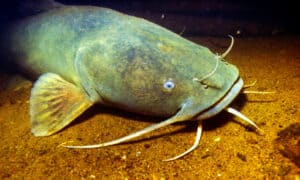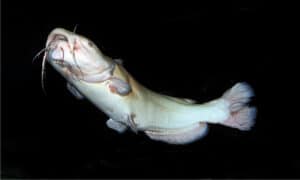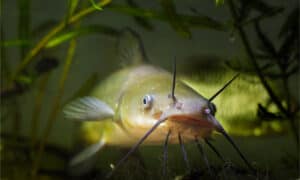Ohio has some of the best fishing spots in the country. Some of the best places to fish in Ohio are Lake Erie, Alum Creek, Greenfield Lake, the Ohio River, and the Hoover Reservoir. In these lakes, you can catch impressive, record-breaking trout, bass, catfish, and sunfish. One of the largest freshwater fish you can find in Ohio’s many lakes, rivers, and streams is the flathead catfish. Can you guess the largest ever caught? Keep reading to discover the largest flathead catfish ever caught in Ohio.
What is the Largest Flathead Catfish Ever Caught in Ohio?
On July 28, 1979, Richard Affolter caught a 58.625-inch long flathead catfish in Clendening Lake. This state record fish weighed 76 pounds and 8 ounces. Only one other catfish species has a record in the state, the channel catfish. However, it’s about half the size of Affolter’s record catch. Gus J. Gronowski caught the largest channel catfish in Ohio in 1992 in the LaDue Reservoir. It was a whopping 41.5 inches long.
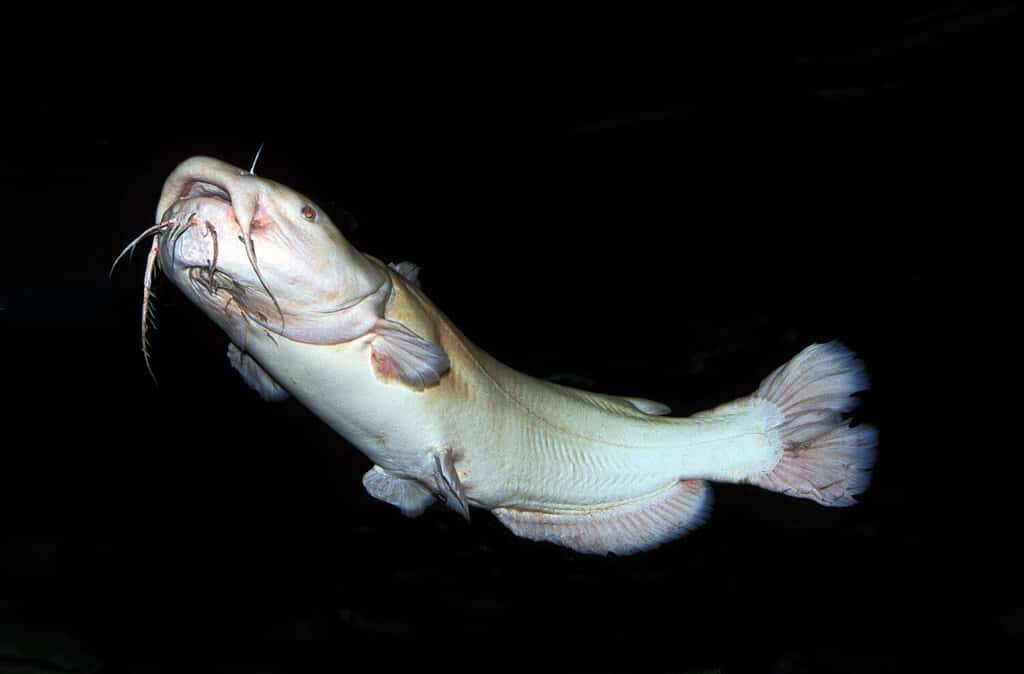
The largest flathead catfish ever caught in Ohio weighed 76 pounds and 8 ounces.
©slowmotiongli/Shutterstock.com
Where Is Clendening Lake on a Map?
If you are wondering where Clendening Lake is on a map, you can basically find it in eastern Ohio between Columbus and Pittsburg, PA. The lake is roughly just less than a two-hour drive from both cities.
Driving south from Cleveland, you can reach Clendening Lake following Interstate 77 for most of the way and getting there in, again, just under two hours.
Tippecanoe is very close to the lake. It is only a mile and a half or so from the body of water.
About Flathead Catfish
Flathead catfish are common and popular freshwater fish in North America. These large fish are also sometimes called mudcats, yellow cats, or shovelhead cats. Flathead catfish are members of the Ictaluridae family. In the wild, they live for up to 28 years.
Size and Appearance
Flathead catfish are easy to identify and distinguish from other catfish species. They have large and wide olive-brown bodies and white-yellow bellies. Flathead catfish vary in coloration though as young flathead catfish in clear streams and lakes appear more mottled. This helps them blend into the floor and hide from predators. Flathead catfish also have small eyes and a flat, shovel-like head.
Possibly the most impressive thing about flathead catfish is their size. These large fish reach between 15 to 45 inches long. However, larger specimens have been recorded. So far, the largest flathead catfish ever caught was 69 inches long. These fish are also heavy! The world angling record for a flathead catfish is 123 pounds. However, there have been reports of flathead catfish exceeding 139 pounds.
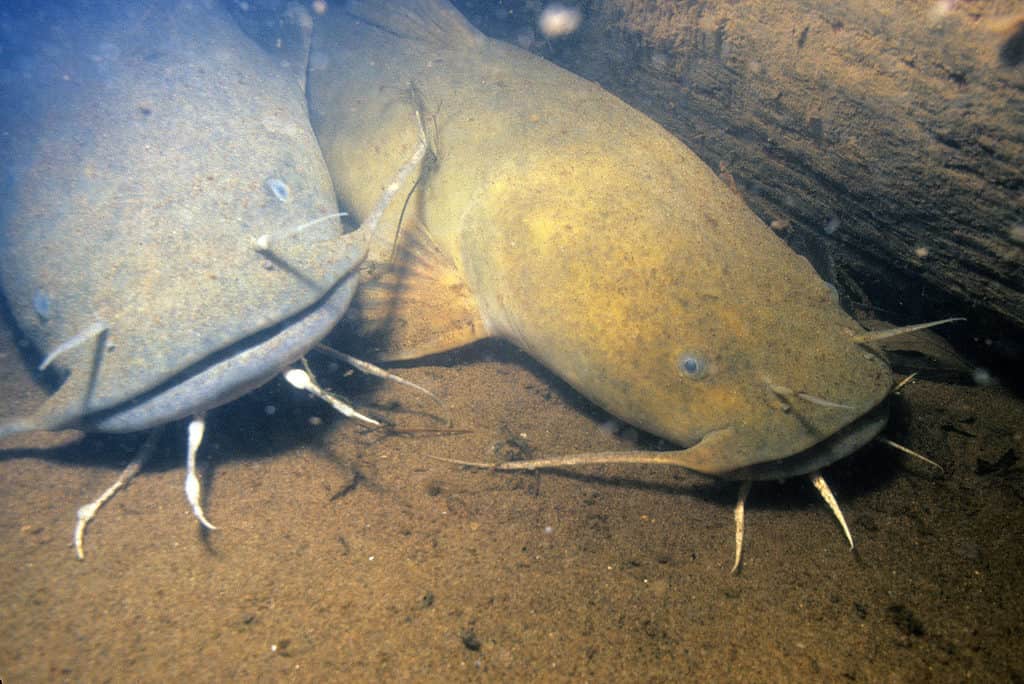
Flathead catfish can reach up to 69 inches long.
©iStock.com/stammphoto
Distribution and Habitat
So, where are these large catfish native to? Flathead catfish are native to parts of North America, specifically from the lower Great Lakes through the Mississippi River watershed and the Gulf states. They live as north as Canada and as far south as northeastern Mexico. They’ve been introduced though to other parts of the United States and can be considered highly invasive as they are large predators, with few natural predators of their own. Flathead catfish have been introduced to Delaware.
Diet
Flathead catfish have big diets. They are excellent scavengers and mainly prey on live fish. However, a flathead catfish’s diet changes as they age. For instance, juvenile flathead catfish mainly eat insect larvae, small fish, and crayfish. As they grow older, they consume larger animals, including other small catfish.
Predators
Mature flathead catfish have few predators. These large fish are too big to eat unless sick or injured. The main predators of adult flathead catfish are humans, and sometimes American alligators. However, young and small flathead catfish, less than 10 inches long, are vulnerable to snakes, birds, and other fish.
Fishing/Anglers
Flathead catfish are powerful swimmers that give anglers a challenge. Not only are they challenging, but they are tasty and provide large amounts of meat. Anglers typically use live bait to lure flathead catfish and strong lines. These fish can be found in rivers, lakes, and ponds of all sizes. You aren’t limited to fishing by the shore either. You can also fish from a boat, dock, or kayak.
Other Common Fish in Ohio
Although flathead catfish are exciting and challenging, they aren’t the only fish you can catch! Listed below we have other fish you can find in Ohio’s waters and their state records.
Brown Trout
The first fish on our list is the brown trout. Although brown trout thrive in North America, they are native to Europe and Asia. These fish are mainly brown and yellow with dark spots on the upper half of their bodies. They were introduced to the United States around the late 1800s. Brown trout are popular gamefish throughout the world. They can be difficult to catch. These European trout range in size. They can weigh up to 44 pounds. The largest brown trout caught in Ohio weighed 14 pounds and 10 ounces. Robert B. Campbell caught this 27.25-inch brown trout in Lake Erie in 2012.
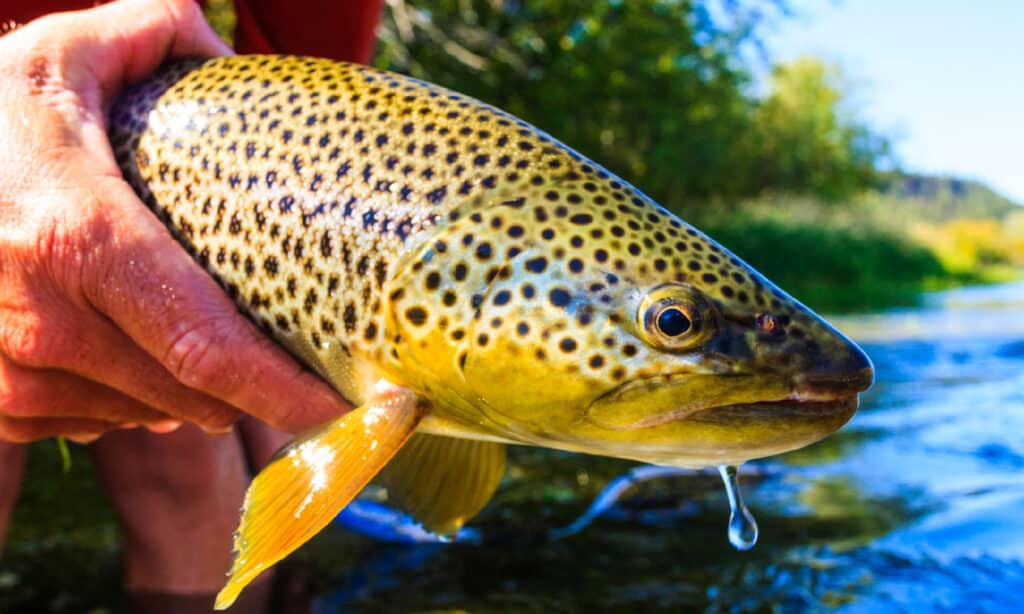
Brown trout are native to Europe and Asia but were introduced to North America in the late 1800s.
©iStock.com/KevinCass
Channel Catfish
The next fish on our list is the other catfish species in Ohio. Channel catfish are smaller than flathead catfish. They are about 12 to 24 inches long and can weigh up to 58 pounds. Channel catfish have a wide range in the United States. They are important cultural fish and are the official state fish of Nebraska, Kansas, Tennessee, and Missouri. These fish are listed as Least Concern on the IUCN Red List. They are excellent hunters, and fast swimmers, and have been introduced to other parts of the world as an invasive species.
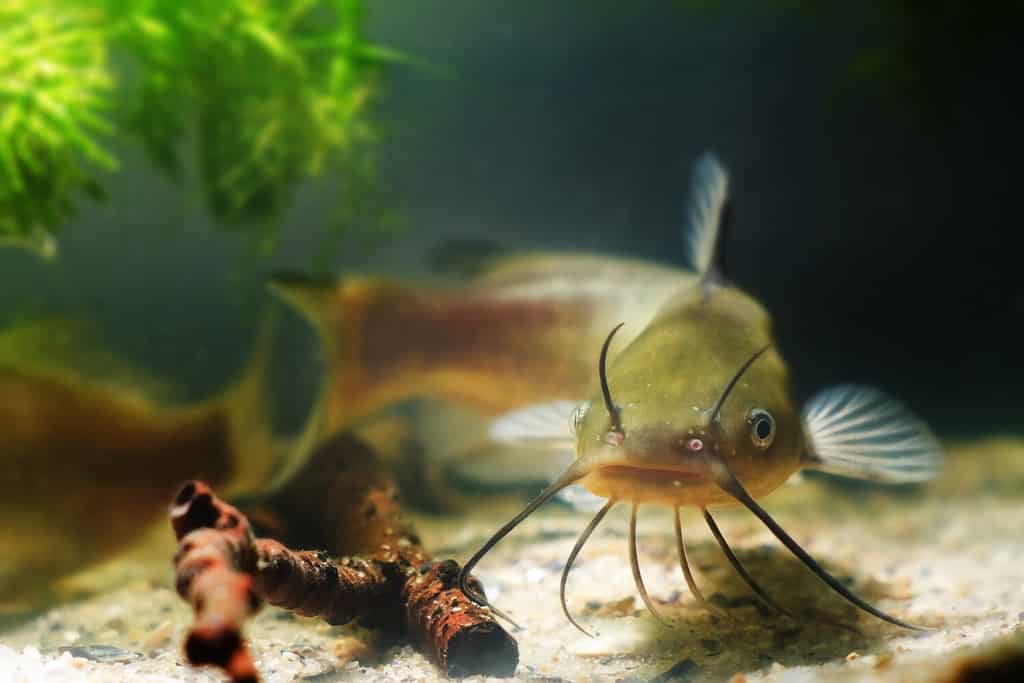
Channel catfish are listed as Least Concern on the IUCN Red List.
©Aleron Val/Shutterstock.com
Rock Bass
Ohio is also home to a healthy population of rock bass. Rock bass are small freshwater fish native to east-central North America. They go by many names, including the red-eye and black perch. Rock bass are found as far north as Quebec and as south as Florida. These small spotted fish mainly live in clear, rocky lakes and ponds. They use vegetation to hide from predators, which they have many. Rock bass are only about 6 to 10 inches long and often weigh less than 2 pounds. The largest rock bass caught in Ohio weighed 1 pound and 15 ounces. George A. Keller has held this record since 1932. He caught the rock bass in Deer Creek and it measured 14.75 inches long.
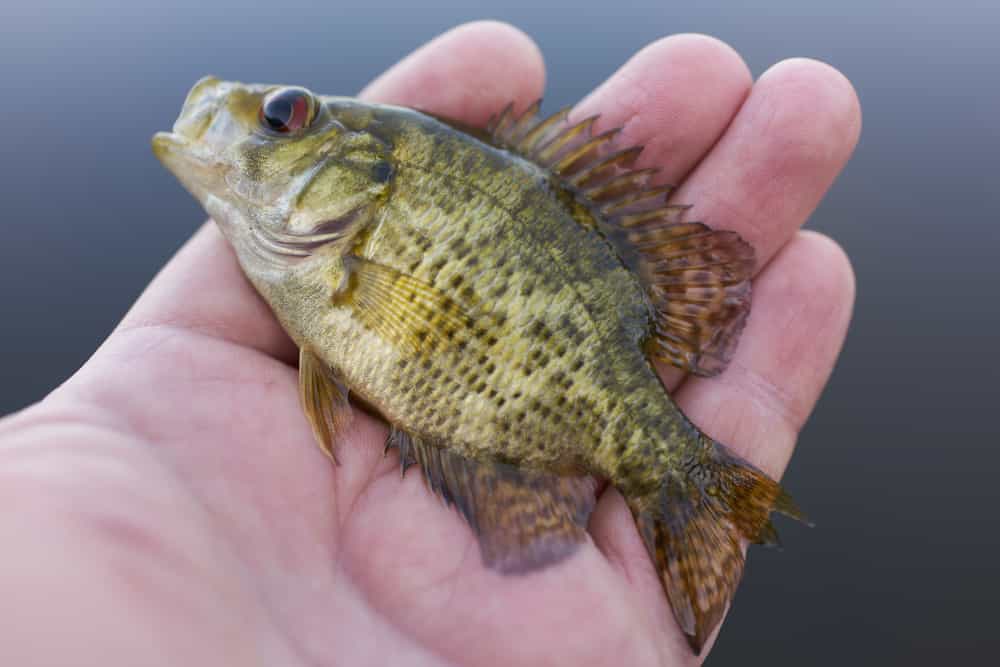
Rock bass rarely weighs more than 2 pounds.
©ramendan | CC BY-ND – License
Yellow Perch
Yellow perch is also common in Ohio. They are also called stripe perch. These freshwater fish are native to a large portion of North America, mainly the northern parts of the continent starting from Canada. Yellow perch aren’t picky fish. They live in either large or small bodies of freshwater. You can find them in slow-moving rivers and brackish muddy water. They are also sometimes stocked in manmade lakes and ponds. Yellow perch are long and have small pointy teeth. Although they can grow up to 20 inches long, they are slender fish with a maximum recorded weight of 4.2 pounds. The largest yellow perch caught in Ohio is about half of that size. In 1984, Charles Thomas caught a 2-pound and 12-ounce yellow perch in Lake Erie. It was also 14.5 inches long.
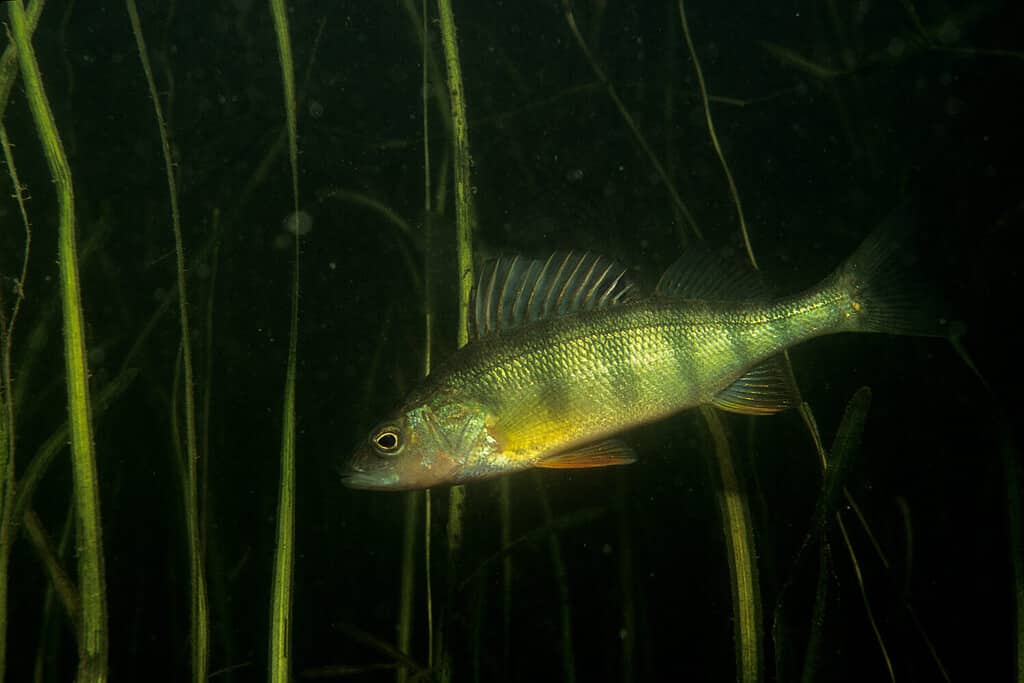
The largest recorded yellow perch weighed 4.2 pounds.
©RLS Photo/Shutterstock.com
Bluegill
Last but not least is the bluegill. This fish is native to North America, east of the Rocky Mountains. It’s a relatively small fish with a distinct bluish spot on its face. These tall and flat fish usually reach 7.5 inches long, although they can grow up to 16 inches. Mature bluegills are about 2.6 pounds, however, they can weigh up to 4.5 pounds. The largest bluegill caught in Ohio weighed 3 pounds and 4 ounces. This impressive bluegill was caught in 1990. Willis D. Nicholes reeled in this 12.75-inch fish while fishing in the Salt Fork Reservoir.
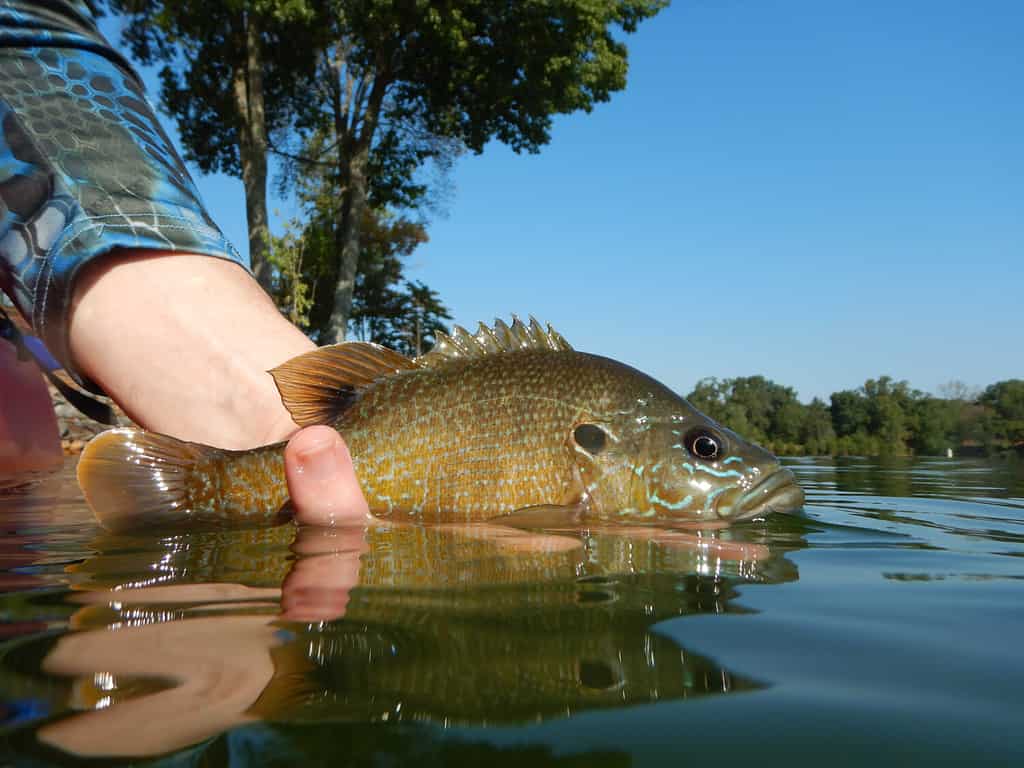
Bluegills can reach up to 16 inches long.
©Brookieland/Shutterstock.com
The photo featured at the top of this post is © Rob Hainer/Shutterstock.com
Thank you for reading! Have some feedback for us? Contact the AZ Animals editorial team.




